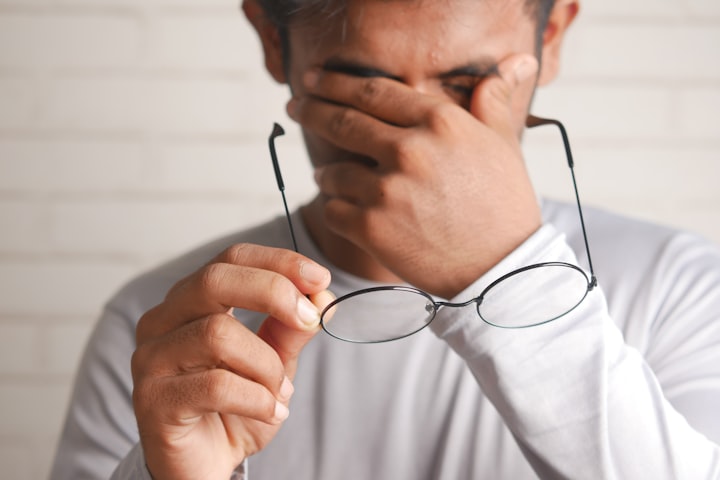How To Read Body Language As A Pro.?
Read this article for understand the untold language.

How to Read Body Language like a Pro
Have you ever wanted to know the best way to read body language like a pro? Body language is a crucial part of communication, and being able to read body language can help you better understand a person's emotions, intentions, and thoughts. Body reading is an incredibly useful skill to have, whether you are in a professional setting or in an interpersonal relationship. In this blog post, we will discuss the best strategies for reading body language like a pro.
1)The basics of body language
Body language is a form of nonverbal communication. It is the way we express our emotions and feelings through physical behavior such as facial expressions, gestures, posture, and eye contact. It can be a powerful tool to help us connect with others, build trust and relationships, and even decode hidden sentiments.
In order to understand body language, it is important to take into account a person’s cultural background and context. Different cultures have different ways of expressing themselves nonverbally, so it's important to observe and understand the behaviour in the environment that you are in.
Body language can be divided into four categories: facial expressions, posture, gestures, and eye contact.
Facial expressions communicate a wide range of emotions. They often act as cues when decoding someone’s sentiment or emotion. For example, a smile indicates happiness while furrowed brows often denote anger or frustration.
Posture can also tell us about a person’s mood. Slouching in a chair or crossing arms can often indicate boredom or discomfort. On the other hand, an open stance with both arms and legs un-crossed may indicate interest and engagement.
Gestures, such as pointing or shrugging of the shoulders, are also important to pay attention to. These movements often indicate how confident someone is in their words or how serious they are taking the conversation.
Finally, eye contact is another great tool for understanding body language. Avoiding eye contact can suggest a lack of interest or confidence, while making direct eye contact shows attentiveness and openness.
By understanding the basics of body language, you can learn to better read and interpret the nonverbal cues of those around you.
2)The difference between verbal and nonverbal communication
Verbal communication is the words we use to express our thoughts, feelings and opinions. It’s an important way for us to connect with one another. Nonverbal communication, on the other hand, refers to communication without words. It includes body language, facial expressions, gestures, posture and more. Decoding nonverbal communication is key to understanding how others are feeling and what they’re really saying.
Nonverbal behaviour can provide a great deal of information about a person’s true thoughts and emotions. By learning to recognize the difference between verbal and nonverbal communication, we can better understand each other and create stronger connections.
3)How to use body language in different situations
Being able to read and understand body language can be a great way to decode people’s sentiments. There are many different ways to use body language in different situations.
First of all, body language can be used to assess the mood and attitude of those around you. Paying attention to the behaviour of others can help you gauge how they may be feeling. If someone is exhibiting signs of agitation or aggression, it can be helpful to adjust your own behaviour in order to stay safe and create a comfortable environment.
Body language can also be useful in group settings. It’s important to pay attention to the body language of everyone in the room in order to get a sense of the group dynamic. If there is tension or an awkwardness in the room, this could affect the outcome of any discussions or activities.
Finally, body language can be useful when having conversations with another person. You may be able to pick up on subtle cues that will indicate how they are feeling or what they are thinking about. Noticing these cues can help you decide on the right words or actions in order to make sure that the conversation progresses in a positive direction.
Overall, understanding and using body language can be a great way to interact with others and better decode their sentiments. With some practice, you can become an expert at reading body language and using it to your advantage in any situation.
4)The benefits of reading body language
Reading body language is an incredibly useful skill, as it allows us to gain insight into people's emotions, attitudes, and intentions without them ever having to utter a single word. Being able to decode the nonverbal cues that people give off can help you understand how someone is truly feeling about a situation, and can often allow you to respond more effectively to that person. By reading body language, you can also gain a better understanding of how people interact with one another, and be able to better predict future interactions. Additionally, decoding the sentiments behind someone’s body language can help you to identify potential issues or problems in a relationship that would otherwise remain hidden. Finally, reading body language allows us to empathize with other people’s feelings and emotions and gain an appreciation for their experiences, which can have a profound effect on our relationships.
If You Want To Learn More Of The Best To Read Body Language click here .






Comments
There are no comments for this story
Be the first to respond and start the conversation.